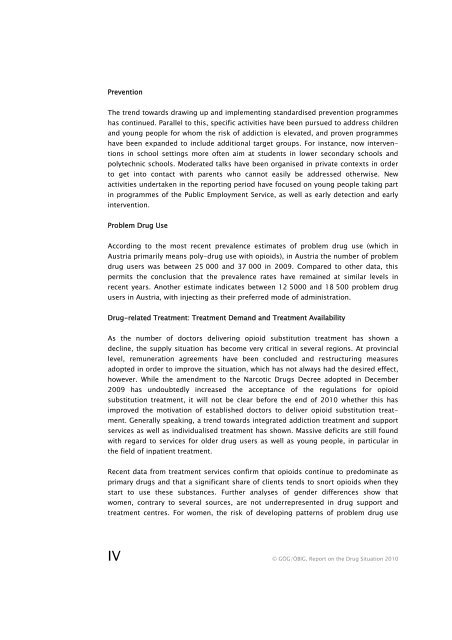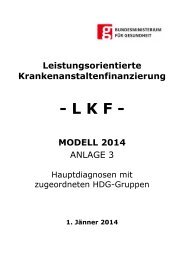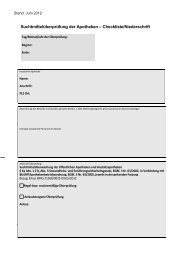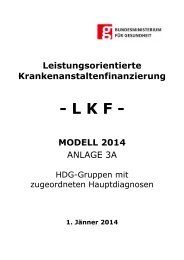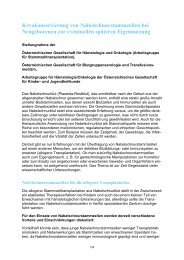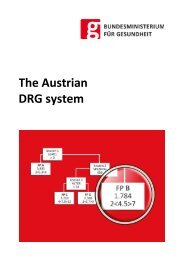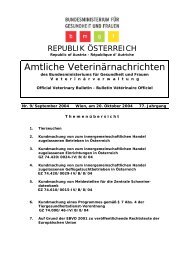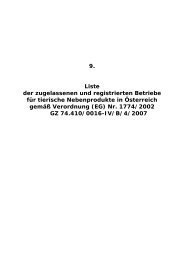Report on the Drug Situation 2010 - Bundesministerium für ...
Report on the Drug Situation 2010 - Bundesministerium für ...
Report on the Drug Situation 2010 - Bundesministerium für ...
You also want an ePaper? Increase the reach of your titles
YUMPU automatically turns print PDFs into web optimized ePapers that Google loves.
Preventi<strong>on</strong><br />
The trend towards drawing up and implementing standardised preventi<strong>on</strong> programmes<br />
has c<strong>on</strong>tinued. Parallel to this, specific activities have been pursued to address children<br />
and young people for whom <strong>the</strong> risk of addicti<strong>on</strong> is elevated, and proven programmes<br />
have been expanded to include additi<strong>on</strong>al target groups. For instance, now interventi<strong>on</strong>s<br />
in school settings more often aim at students in lower sec<strong>on</strong>dary schools and<br />
polytechnic schools. Moderated talks have been organised in private c<strong>on</strong>texts in order<br />
to get into c<strong>on</strong>tact with parents who cannot easily be addressed o<strong>the</strong>rwise. New<br />
activities undertaken in <strong>the</strong> reporting period have focused <strong>on</strong> young people taking part<br />
in programmes of <strong>the</strong> Public Employment Service, as well as early detecti<strong>on</strong> and early<br />
interventi<strong>on</strong>.<br />
Problem <strong>Drug</strong> Use<br />
According to <strong>the</strong> most recent prevalence estimates of problem drug use (which in<br />
Austria primarily means poly-drug use with opioids), in Austria <strong>the</strong> number of problem<br />
drug users was between 25 000 and 37 000 in 2009. Compared to o<strong>the</strong>r data, this<br />
permits <strong>the</strong> c<strong>on</strong>clusi<strong>on</strong> that <strong>the</strong> prevalence rates have remained at similar levels in<br />
recent years. Ano<strong>the</strong>r estimate indicates between 12 5000 and 18 500 problem drug<br />
users in Austria, with injecting as <strong>the</strong>ir preferred mode of administrati<strong>on</strong>.<br />
<strong>Drug</strong>-related Treatment: Treatment Demand and Treatment Availability<br />
As <strong>the</strong> number of doctors delivering opioid substituti<strong>on</strong> treatment has shown a<br />
decline, <strong>the</strong> supply situati<strong>on</strong> has become very critical in several regi<strong>on</strong>s. At provincial<br />
level, remunerati<strong>on</strong> agreements have been c<strong>on</strong>cluded and restructuring measures<br />
adopted in order to improve <strong>the</strong> situati<strong>on</strong>, which has not always had <strong>the</strong> desired effect,<br />
however. While <strong>the</strong> amendment to <strong>the</strong> Narcotic <strong>Drug</strong>s Decree adopted in December<br />
2009 has undoubtedly increased <strong>the</strong> acceptance of <strong>the</strong> regulati<strong>on</strong>s for opioid<br />
substituti<strong>on</strong> treatment, it will not be clear before <strong>the</strong> end of <strong>2010</strong> whe<strong>the</strong>r this has<br />
improved <strong>the</strong> motivati<strong>on</strong> of established doctors to deliver opioid substituti<strong>on</strong> treatment.<br />
Generally speaking, a trend towards integrated addicti<strong>on</strong> treatment and support<br />
services as well as individualised treatment has shown. Massive deficits are still found<br />
with regard to services for older drug users as well as young people, in particular in<br />
<strong>the</strong> field of inpatient treatment.<br />
Recent data from treatment services c<strong>on</strong>firm that opioids c<strong>on</strong>tinue to predominate as<br />
primary drugs and that a significant share of clients tends to snort opioids when <strong>the</strong>y<br />
start to use <strong>the</strong>se substances. Fur<strong>the</strong>r analyses of gender differences show that<br />
women, c<strong>on</strong>trary to several sources, are not underrepresented in drug support and<br />
treatment centres. For women, <strong>the</strong> risk of developing patterns of problem drug use<br />
IV © GÖG/ÖBIG, <str<strong>on</strong>g>Report</str<strong>on</strong>g> <strong>on</strong> <strong>the</strong> <strong>Drug</strong> Situati<strong>on</strong> <strong>2010</strong>


